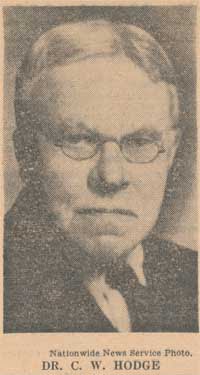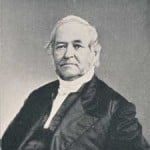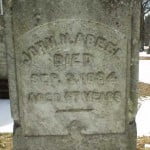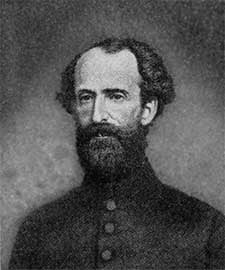One Pastor’s Account of the Civil War
Thomas Bloomer Balch was the son of the Rev. Stephen Bloomer Balch and his wife Elizabeth (Beall) Balch. He was born at Georgetown, District of Columbia, on February 28, 1793. He graduated from the College of New Jersey in 1813, studied theology at Princeton Seminary under Archibald Alexander and Samuel Miller, and was licensed to preach by the Presbytery of Baltimore on October 31, 1816.
From the Spring of 1817 to the Fall of 1819 he preached as assistant to his father, who was at that time the pastor of the church in Georgetown. Thomas then left that post to serve as pastor of churches in Snow Hill, Rehoboth and Pitt’s Creek, Maryland. He lived for some years in Fairfax county, Virginia, preaching as he had opportunity, and later supplied the pulpit for churches in Warrenton and Greenwich, later serving other churches in the Fredericksburg area. Rev. Balch died on February 14, 1878. To the last his mind was clear, and he uttered many expressions of hope and faith up to his parting breath.
Thus the short account of a man’s life, as recorded in Nevin’s Encyclopedia of the Presbyterian Church, pp. 52-53. But every life is intensely interesting, if you just search. Beyond the brief account above, you first find there was an epic poem, Ringwood Manse, written by E. P. Miller and based upon the life and ministry of Thomas B. Balch. Digging a bit further, you might also find a compilation of Rev. Balch’s letters My Manse During the War: A Decade of Letters to the Rev. J. Thomas Murray. The University of North Carolina has digitized this latter work, and to encourage further reading, a sample paragraph follows:
Letter No. VIII.
The famine had become grievous in the land, and there was no Egypt into which we could send for supplies; nor any balm which could be presented to those who held the keys that were locking up oats, corn and wheat. How often had the writer doubted whether a dearth of provisions would ever reach that portion of Virginia in which his lot had been cast. Little do we know of the future. It became clear that my pictures of continued plenty had been penciled on green leaves which were destined to fade, or on clouds subject to evaporation. My services, as a minister, began to take their complexion from the circumstances in which we were placed. One of my discourses, or rather one of my talks, was from the text, “The Lord will provide.” Habakkuk says that the Christian has a dependence on something higher than the buds of the fig-tree, or the blossoms of the vine. The Idumean believer went living on, after his olives had perished and his fields were smitten. His flocks were killed, and his stalls were empty; and the Idumean eagle could plume his wings from a warmer nest than the one occupied by the Patriarch. Our Lord assures us that man liveth not by bread alone. Even at such a time we thought it right to celebrate at the Manse the supper which our Lord had instituted on the night before his crucifixion. We had no wine, however, on our premises, and it was a rare element throughout the neighborhood. But Charles Green, member of the Independent Church of Savannah, being apprised of my wishes, sent me enough to supply the communicants, for which my sincere thanks were returned. Two silver goblets belonging to Mrs. Jones of Sharon, had been left at my house, and they were used on the solemn occasion. The day was bright, and the congregation crowded. Some were under the trees of the yard, some on the steps of the stairs, and others in the rooms of the Manse. Several ministers were present who gave me help in the service, and seldom has it been my lot to attend on communicants more apparently devout. May they advance in grace. The Divine Life has in it both an upward and downward tendency. The Japanese permit their trees to attain their full growth: but then dwarf them down to the smallest possible dimensions, and carry them about in diminutive vases. So with the great Husbandman. The more his people tower on high, the more does he reduce them into lowly violets. And here, allow me to ask, why may not the Lord’s Supper be administered in a lower as well as an upper room – in a Manse – a grove, or on the slope of a hill, as well is in a Church? When were the Covenanters more happy than when they sung among the braes and kneeled on Scottish heather! or when were Whitfield and Wesley more successful than when they stormed the air circulating on the open fields and sequestered downs of England?
Words to Live By:
It is a constant theme of Scripture, that “God is our refuge and strength, a very present help in trouble.” The Lord provides for His children, encourages and sustains them. God cares for His children in times of trouble. John Flavel wrote, “Jesus Christ has solemnly recommended all the people of God to His particular care. It was one of the last expressions of Christ’s love to them at the parting hour — John 17:11. ‘And now I am no more in the world, but these are in the world; and I come to thee, Holy Father, keep through thine own name those whom thou hast given me.’ ” [The Righteous Man’s Refuge, by John Flavel, Works, iii.386.]






